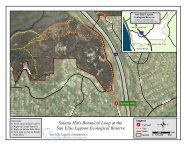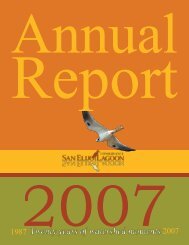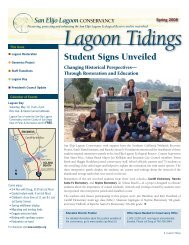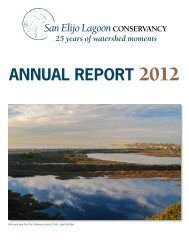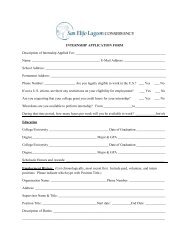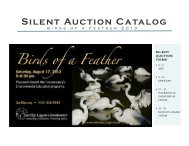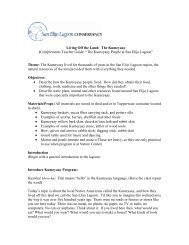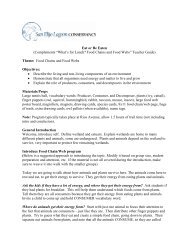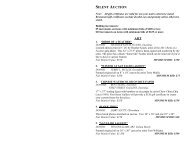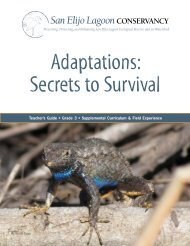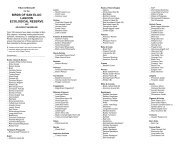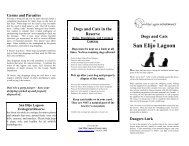Food Chains and Food Webs - San Elijo Lagoon Conservancy
Food Chains and Food Webs - San Elijo Lagoon Conservancy
Food Chains and Food Webs - San Elijo Lagoon Conservancy
You also want an ePaper? Increase the reach of your titles
YUMPU automatically turns print PDFs into web optimized ePapers that Google loves.
ACTIVITY 1<br />
Is It Alive, Dead or Non-living?<br />
Student Worksheet<br />
Instructions<br />
You are looking for living (biotic) things, such as birds, insects, or plants, <strong>and</strong> for non-living (abiotic)<br />
things such as water, dirt, or sunshine. When you find something, write the name of the item in the<br />
table. Next, add your observations, such as where you saw it <strong>and</strong> what it was doing (if alive). For<br />
each item you observe, check a box to identify if it is biotic <strong>and</strong> alive, biotic but now dead, or abiotic.<br />
When you return to the classroom, answer the questions at the bottom of the page.<br />
Questions:<br />
Did you find more biotic or abiotic items? ____________________________________________________________________<br />
Which places had the most biotic items? ____________________________________________________________________<br />
What do biotic things need to survive? ______________________________________________________________________<br />
How do the abiotic things help or harm the biotic things? _______________________________________________________<br />
______________________________________________________________________________________________________<br />
<strong>San</strong> <strong>Elijo</strong> <strong>Lagoon</strong> <strong>Conservancy</strong> | <strong>Food</strong> <strong>Chains</strong> & <strong>Food</strong> <strong>Webs</strong> Teacher’s Guide | Page 9



